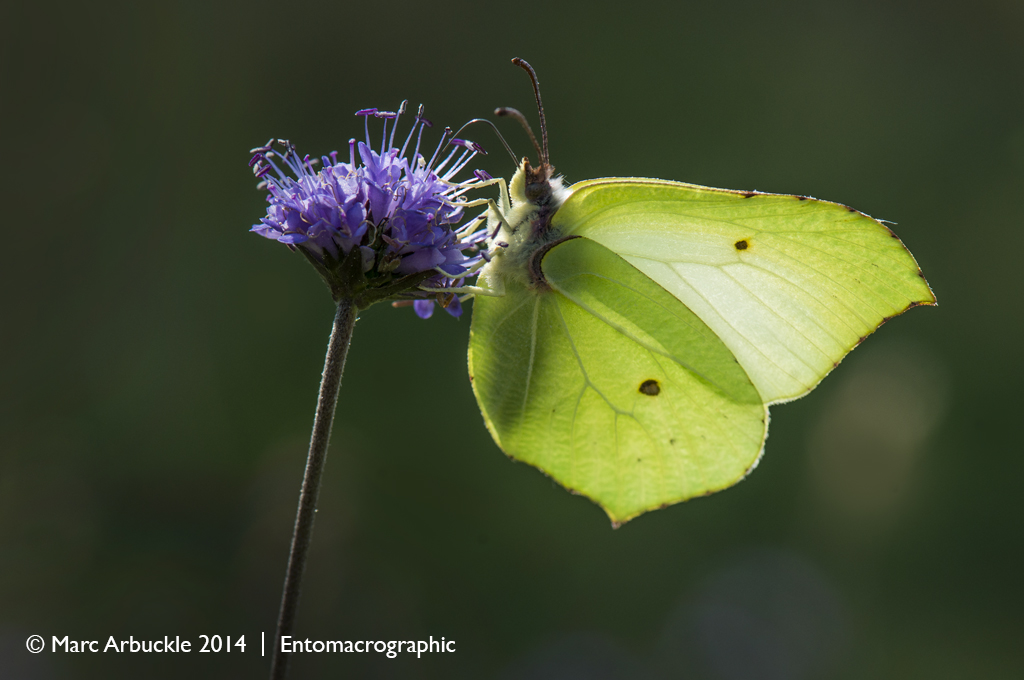Brimstone
I’ve been chatting to Michael Marlow via email about insects and macro photography. I explained that the majority of my photographs are essentially record shots and that I rarely take more artistic photos. But here’s an exception, a photo of a male Brimstone Gonepteryx rhamni nectaring on Devils-bit Scabious and here’s another from a post last year.
I guess what’s probably most surprising about that statement is the fact that I am an artist or designer of sorts, albeit primarily a graphic artist and illustrator by profession. However, I have dabbled more seriously on the fine-art side of things and in this I was much encouraged by my late father-in-law, Gerard Lumley or Marcel Zouf as he liked to be known when working as an artist. He’s much missed.
For me though the fine-art path to be a serious painter led to nothing but trouble. Dilettantism, depression, and ultimately divorce. Well there’s only so much narcissistic self-destruction a relationship can take. Fortunately none of my paintings survive. I’ve rarely picked up a pencil or brush in the last 12 years but maybe my interest in insects will inspire me to start drawing again and who knows you might even get to see a doodle or sketch on this blog.
Incidentally, Michael’s just written an excellent series of articles about the reverse-lens method and diffused-flash on his excellent blog BugPhoto.net which I can highly recommend.



